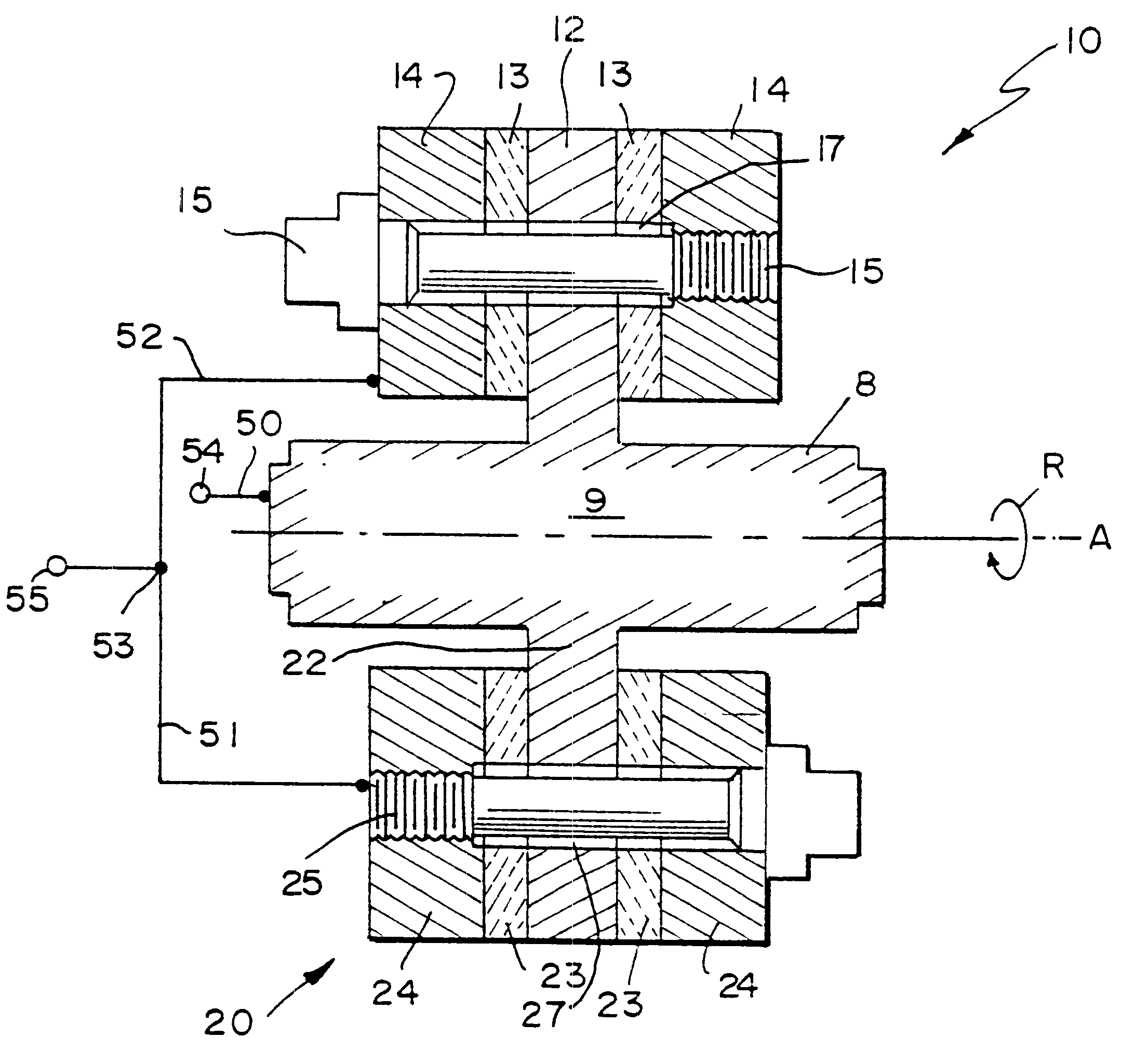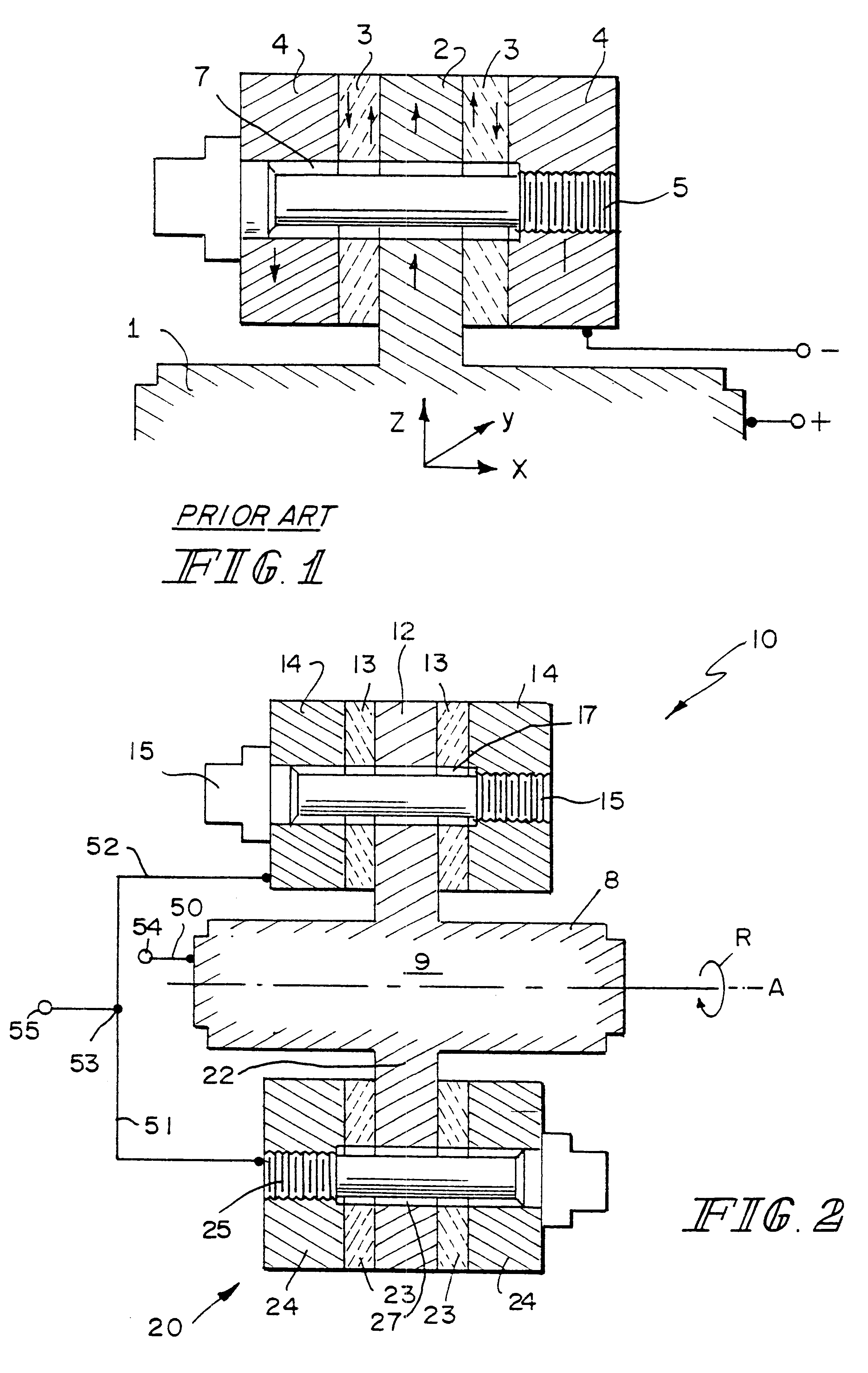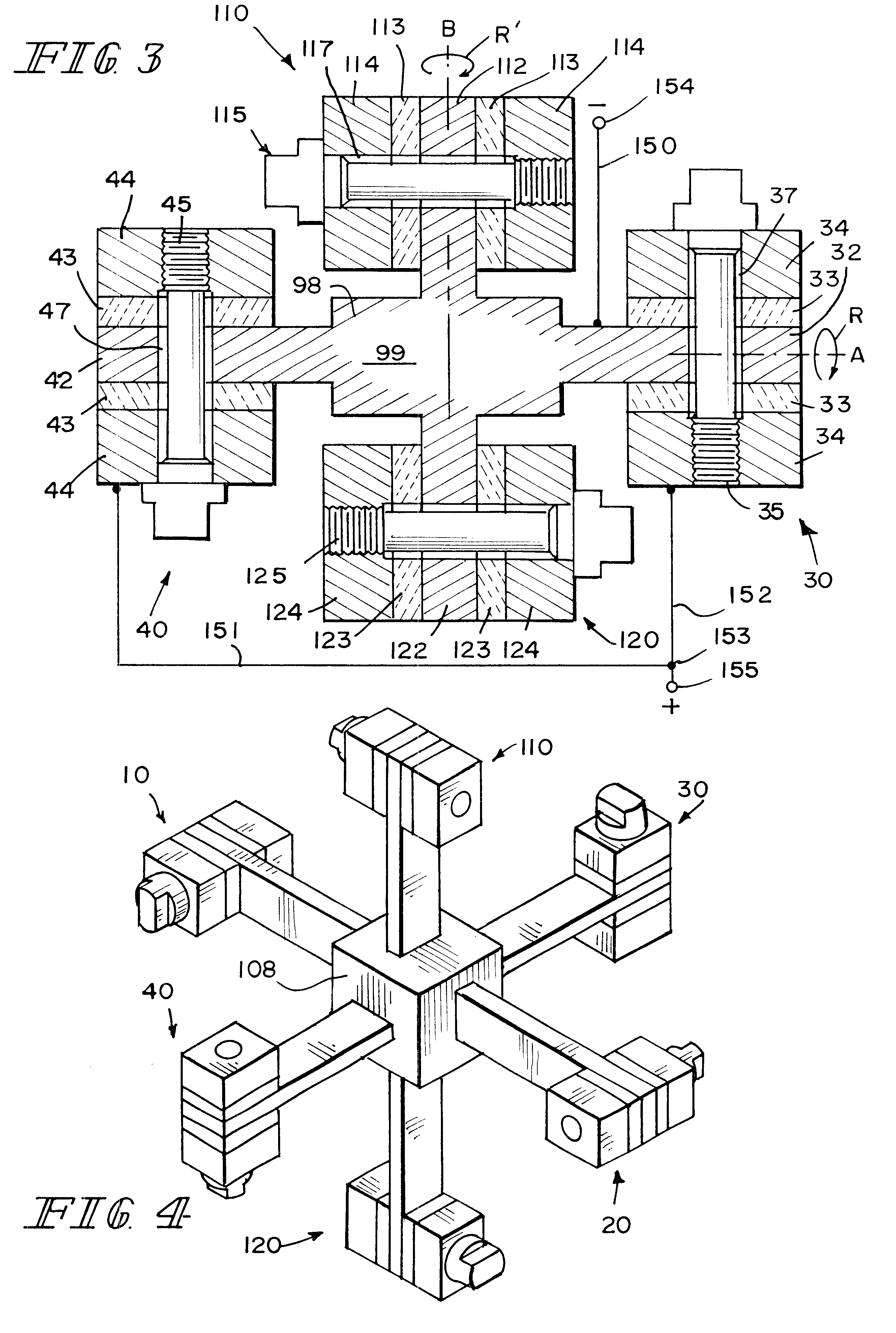Piezoelectric rotational accelerometer
- Summary
- Abstract
- Description
- Claims
- Application Information
AI Technical Summary
Benefits of technology
Problems solved by technology
Method used
Image
Examples
second embodiment
IONAL ACCELEROMETER
A double-axis rotational accelerometer may be constructed by adding third and fourth spaced-apart linear accelerometer halves, aligned so that the first, second, third and fourth accelerometers halves have mutually parallel axes of sensitivity. Each of the third and fourth linear accelerometer halves have at least one piezoplate and at least one seismic mass firmly clamped to the piezoplate.
The rigid connection between the third and fourth linear accelerometer halves defines a second axis perpendicular to the first axis. The polarity of the third and fourth linear accelerometer halves is reversed such that each half will output a signal of like polarity when subjected to rotation about the second axis.
The rigid connection has a body connected to the first and second linear accelerometer halves and a third post extending from the body and mutually perpendicular to the body and the first post as well as a fourth post extending from the body substantially collinear t...
third embodiment
TIONAL ACCELEROMETER
A third pair of linear shear accelerometer halves may be added in order to create a rotational accelerometer capable of measuring rotation about a third axis. This embodiment comprises each of the elements of the double axis rotational accelerometer, and adds fifth and sixth spaced-apart linear accelerometer halves, aligned to have parallel axes of sensitivity, wherein each of the fifth and sixth linear accelerometer halves having at least one piezoplate and at least one seismic mass firmly clamped to the piezoplate. A rigid connection between the fifth and sixth linear accelerometer halves, thereby defining a third axis mutually perpendicular to the first and second axes. The polarity of the fifth and sixth linear accelerometer halves is reversed such that each accelerometer half will output a signal of like polarity when subjected to rotation about the second axis.
The body is connected to the first, second, third and fourth linear accelerometer halves, and a fi...
PUM
 Login to View More
Login to View More Abstract
Description
Claims
Application Information
 Login to View More
Login to View More - R&D
- Intellectual Property
- Life Sciences
- Materials
- Tech Scout
- Unparalleled Data Quality
- Higher Quality Content
- 60% Fewer Hallucinations
Browse by: Latest US Patents, China's latest patents, Technical Efficacy Thesaurus, Application Domain, Technology Topic, Popular Technical Reports.
© 2025 PatSnap. All rights reserved.Legal|Privacy policy|Modern Slavery Act Transparency Statement|Sitemap|About US| Contact US: help@patsnap.com



